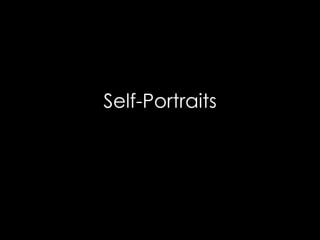Recommandé
Contenu connexe
Tendances
Tendances (20)
Value painting assignments- posterized or monochromatic 

Value painting assignments- posterized or monochromatic
Plus de Rachel Hayes
Plus de Rachel Hayes (20)
Self portrait drawing
- 5. “Do not allow yourself to get discouraged. Every head anyone draws depends on construction, just as much as every building, every car, every other three- dimensional object does. This is what the artist’s job really is in learning how to construct things in three dimensions on a two-dimensional surface. We have to think of each thing we draw in its entirety and see how its dimensions appear to us from a particular viewpoint. Representation in three dimensions calls for knowledge and study. But such knowledge is no more difficult than that required in any other field. No matter how great your talent, talent has to work with knowledge to do anything well. When the search for particular knowledge becomes pleasant as well, half the battle is won. Construction need not worry you; it comes with practice.” Andrew Loomis, Drawing the Head and Hands
- 7. Remember you are not depicting, say, your face. Instead, you are trying to faithfully record the lines you perceive. In other words, first there is perception -- try to stop making a whole out of the parts. Instead say: I am looking at the shape of the edge of this thing, and that thing happens to be an ear, and look at where you see lines, and then try to get them on paper. Drawing is all about seeing.

